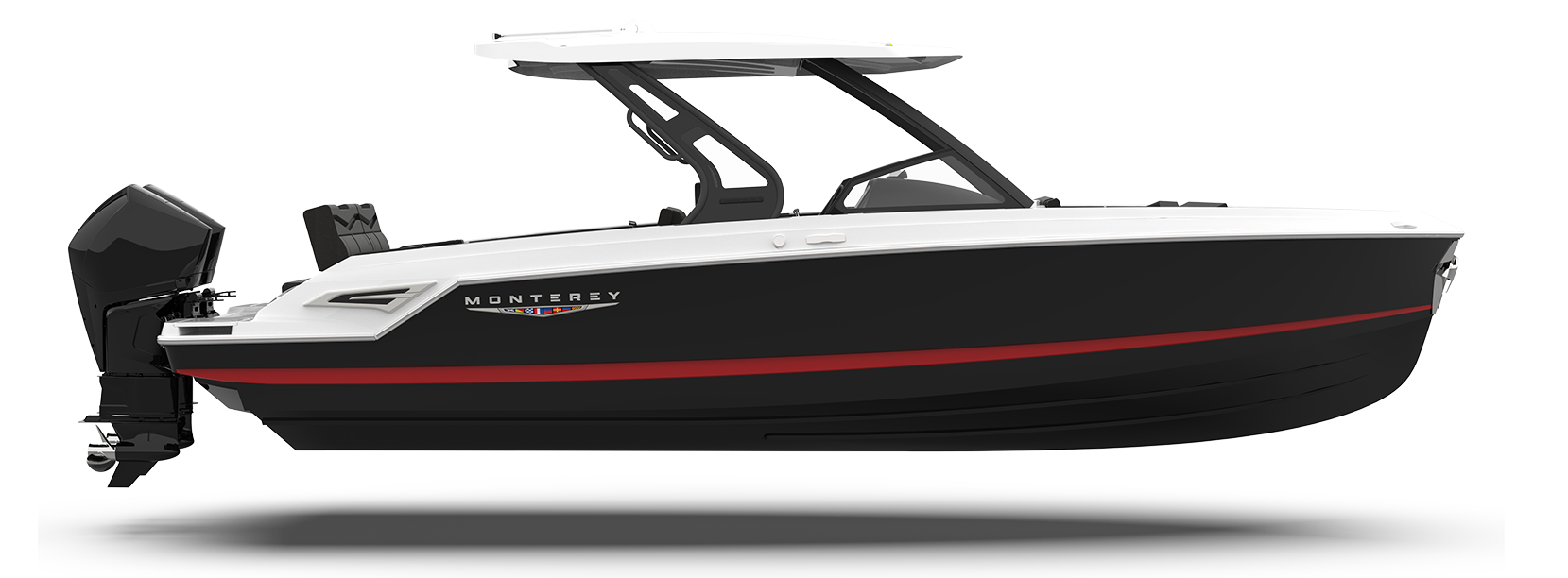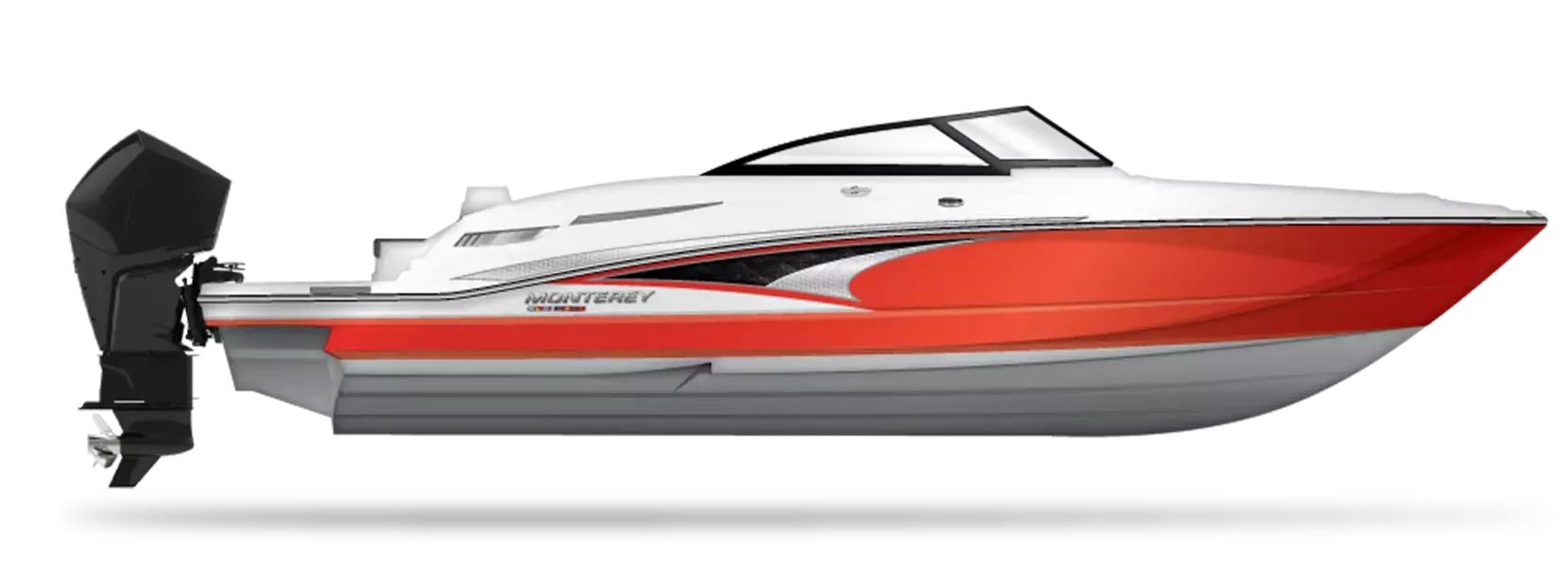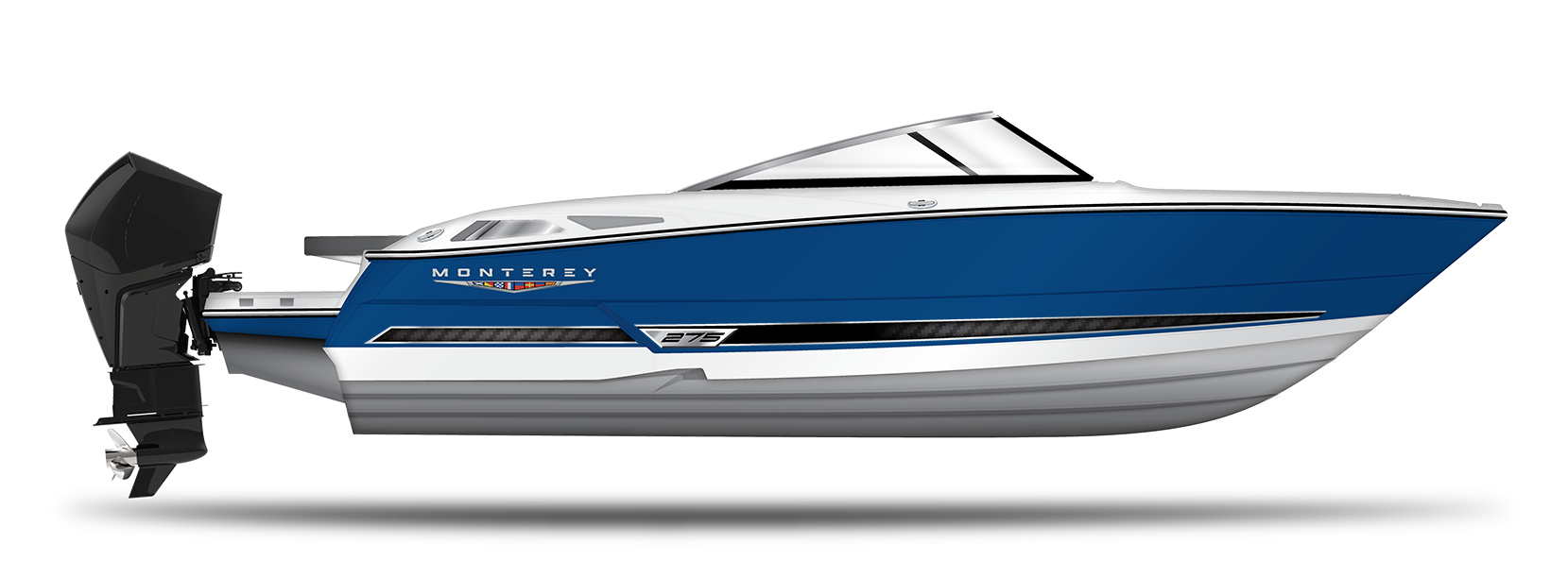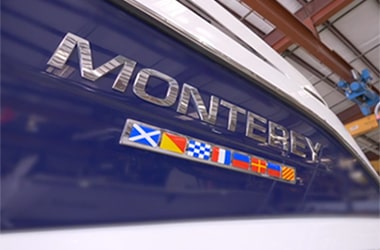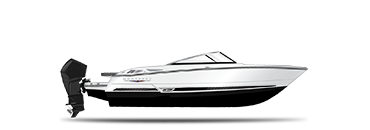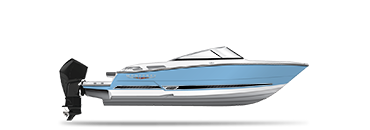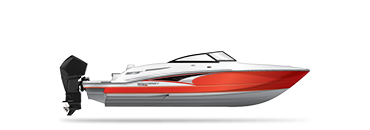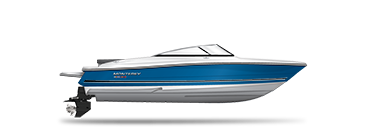Using Your Monterey Boat's Trim to Your Advantage
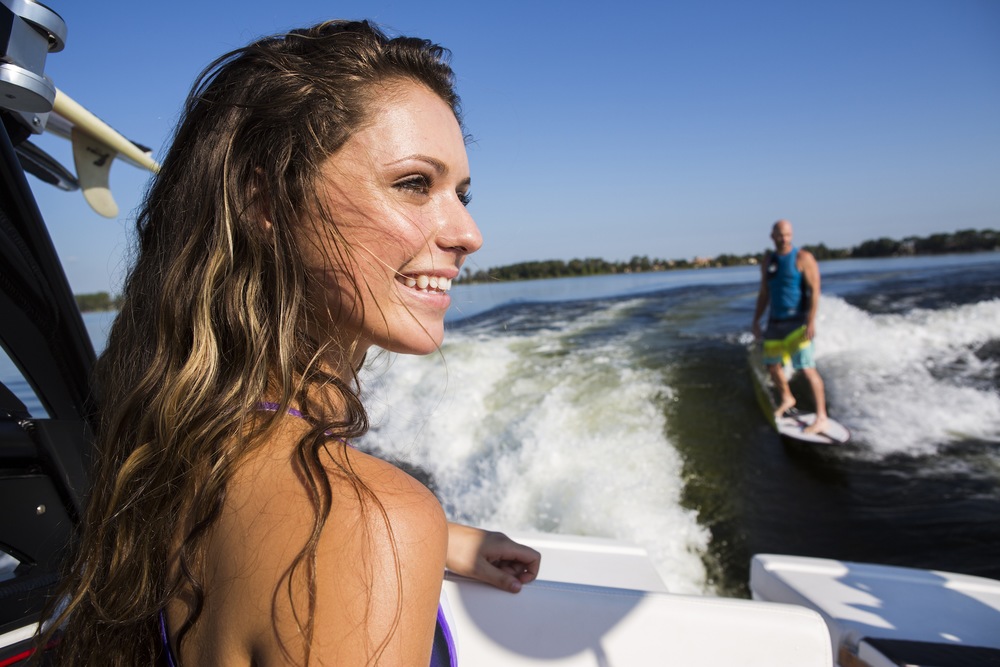
Boats handle best when they run parallel with their at-rest waterline — you’ll notice a more comfortable ride, increased speed and more efficient gas mileage. The bow of your boat meets the water at a specific angle — and that angle has a direct correlation to how efficiently you operate your vessel.
Trim isn’t something you can set and forget because load and water conditions change regularly, so having the ability to adjust it on the fly is essential. It’s equally as important to know how to fix it properly — failure to adjust it incorrectly could cause the boat to swamp. If you tilt the angle of the engine too far in or down, known as negative trim, the bow of your boat will drop. If you tilt the angle of the engine too far out or up, known as positive trim, the bow of your boat will rise.
To give boaters the ability to adjust and maintain the proper angle, outboard and sterndrives feature a power trim adjustment that gives you the ability to tilt the drives’ angle out or in. However, this means the propeller handles the power trim, which was designed to force the boat in a forward motion. When the prop is used for trim, the prop is pushing the boat forward in addition to raising and lowering the stern — this increases the prop slip, killing your boat’s performance. The power trim adjustment is also ineffective at slower speeds and unable to correct listing.
In addition to increasing prop slip, the power trim adjustment is solely for adjustments on the axis that runs fore — closer to the bow, or front of the boat — and aft — closer to the stern, or back of the boat. In other words, power trim adjustment only helps you make adjustments to the angle of your boat tilting more forward or backward. What happens when you need to correct a leaning problem, known as a list? The simplest answer is to redistribute the weight of passengers and cargo to compensate for the sideways list, but conditions are always changing, and redistributing weight at higher speeds can have a magnified effect on the shift of the boat.
To maximize the control of your trim and address both of these issues — avoiding prop slip and making lateral adjustments — adding trim tabs to the transom is ideal.
Changing a Boat’s Attitude to Match Sea Conditions
If you’ve been wondering how to use trim tabs in rough water, you’re not alone — in fact, regardless of whether you have trim tabs, you must consider sea conditions, since they directly impact how you find your boat’s perfect attitude. Therefore, your boat’s attitude should change depending on what type of sea you encounter. Be mindful, small adjustments can have a big impact — in both power trim and trim tab adjustments, but also adjustments in weight shifting on the boat. Just because you’ve changed your boat’s attitude to match sea conditions doesn’t mean you can set it and forget it on the water. Passengers moving on the boat and changing sea conditions are two reasons finding your boat’s perfect attitude can be a permanent work in progress.
Here are some adjustments you should consider making to improve your boat’s attitude in each of the following sea conditions.
- Choppy head sea — If you find yourself running into a head sea, you should trim your boat down so the sharp forward sections of the boat are cutting into the waves. Bringing the “V” of the hull in contact with the waves will help alleviate the waves pounding the hull, and any passengers you have on the boat.
- Following sea — Your trim tabs should be fully retracted in a following sea or when running an inlet. Keeping the tabs up will ensure the current won’t push the stern from side to side — ultimately giving you maximum steering control and the best maneuverability.
- Beam sea — When waves are approaching from the side of the boat, passengers often notice a spray of water from the windward side. By adjusting the trim tabs to raise the windward side of the boat, you can block the spray the wind brings over the boat, keeping your passengers dry.
- Correcting porpoising — If you have a performance boat, chances are you’re familiar with the condition known as porpoising — as you increase speed, the bow of the boat rises out of the water and then bounces back down when gravity overcomes it. To help alleviate this, press “bow down” in half-second bursts and the trim tabs will deflect. As they deflect, the porpoising will subside — the only effect you’ll see on your speed is a potential increase. It shouldn’t take much, so make sure you don’t overdo it.
- Backing down — When you’re operating the boat in reverse, make sure you have both trim tabs fully raised. If you leave them down, they produce drag, which puts a strain on the tabs, but also has a negative effect on the boat’s handling — and that’s just if you leave them both down at the same level. If one tab is deflected more than the other, the boat will likely pivot in that direction. The easiest way to avoid any trouble with trim tabs in reverse is just to make sure they are fully retracted — in that case, they’ll have no impact on backing down.
Mastering Your Boat’s Trim
Mastering your boat’s trim so you can use it to your advantage isn’t easy — it takes the right set of tools, knowledge and patience.
At Monterey Boats, we’ve been a boat manufacturer and dealer for more than 60 years, so we understand how boats, engines and trim tabs can work together to maximize your performance to give you increased speed, a smoother ride and improved fuel efficiency.
If you have questions about perfecting your boat’s trim — or aren’t sure where to start — please don’t hesitate to contact us
Bookmark & Share
User Comments
Be the first to comment on this post below!
Previous Article
Next Article


